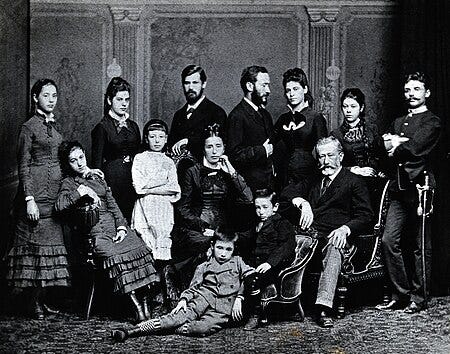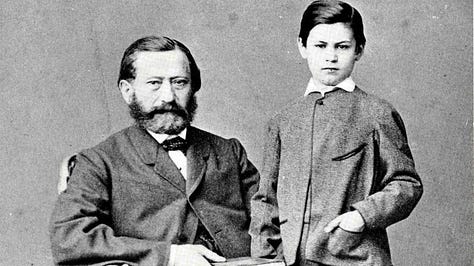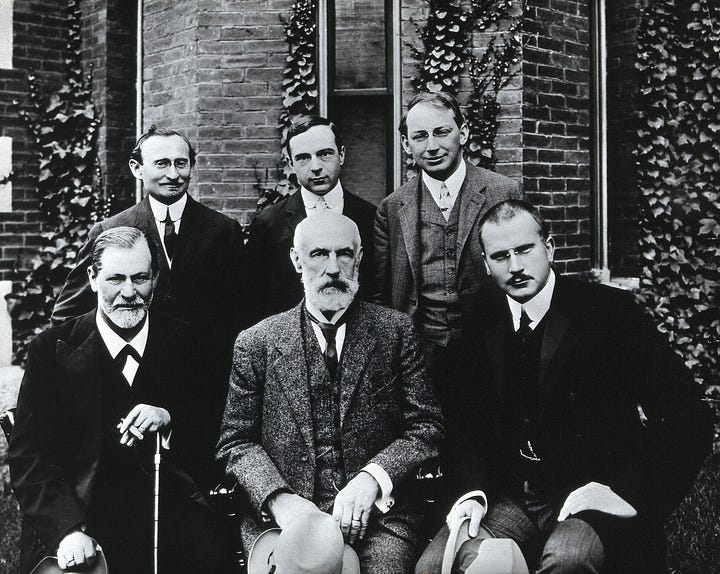God in Mind: The Psychology of Religion
Part Two: Is Religion Illusion, Delusion or Prehension?
I do not identify as a “Christian” nor an “Atheist”, and even if you convincingly put these together as some do in “Christian Atheism”, I don’t plan on buying the t-shirt. There are some aspects of what could be identified as “Christian” that I value, and others I don’t. Likewise, there are some aspects of what would be considered “Atheist” that I accept, and others I reject. In my view, neither of them understand the value of the psychology of religion.
This is Part Two of the new series, “God in Mind: The Psychology of Religion”. Last week was a series introduction, It's All in Your Head (Or Is It?). Today’s part two asks the question: “Is Religion an Illusion, Delusion or Prehension”. More specifically, is religion:
a comforting illusion that helps people cope with existential anxieties
a false belief that persists despite evidence proving it false and occurs especially in mentally disturbed states
the act of taking hold, seizing, or grasping a reality
Typically, Christians are not fond of the field of the psychology of religion because they equate it with the characterization that anything related to God is simply “all in your head,” meaning it’s not real and just a figment of your imagination. Atheists often commit a similar error by claiming that the psychology of religion proves that God is just a delusion.
Richard Dawkins, the author of The God Delusion, wrote, “Belief in a personal god qualifies as a delusion.” Sam Harris in The End of Faith wrote, “It is difficult to imagine a set of beliefs more suggestive of mental illness than those that lie at the heart of many of our religious traditions.”
I get it. There are plenty of examples where religious people go off the rails. But in my view, these assumptions and judgements cheapen the value of the psychology of religion. Understanding the psychological dynamics of religious belief and experience doesn’t have to be a scathing indictment against them. Rather than weaponizing the psychology of religion to attack the existence of God and the supernatural, what if we became more curious about what we all can learn about religion and spirituality through the lens of psychology?
It’s an uphill battle trying to make this case in exploring the work of Sigmund Freud, since he is often demonized by traditional Christians.
Here goes…
Who is Sigmund Freud?
Sigmund Freud has the same problem as Charles Darwin and Karl Marx when it comes to the ominous depictions of them in images. Look at the picture above. You’re not sure if you’re looking at one of the most consequential thinkers in the field of psychology and father of psychoanalysis… or a deranged serial killer. Darwin, Marx and Freud may be the most vilified intellectual figures of history among Christians.
Freud is sometimes demonized as one who had perverted views and theories about human sexuality (i.e. psychosexual development, Oedipus complex), which is especially upsetting to many traditional Christians who sometimes struggle to discuss sex unless it’s about purity culture and monogamous heterosexuality. A popular Freudian myth is that he was a cocaine addict. In the 1880’s Freud experimented with cocaine for its therapeutic benefits, but stopped recommending it when he discovered it was addictive.
There’s no question that Freud is a complicated and controversial figure. I’m not trying to defend him, there are reasons not to be a fan, and there are some who refute his theories… but he isn’t considered one of the most influential thinkers of the 20th century for nothing. For the purpose of this article, I’d like to discuss some of his views as they relate to the psychology of religion.
Sigmund Freud was born to Galician Jewish parents in 1856 in the Moravian town of Freiberg, in the Austrian Empire. He earned a medical degree and practiced as a doctor in Vienna. In 1885, he was appointed Lecturer on Nervous Diseases at the University of Vienna. He is most notably known as the founder of psychoanalysis. Although an atheist, born into a Jewish family Freud maintained a secular Jewish identity.
Following the German annexation of Austria in 1938, Freud left Austria to escape Nazi persecution. He had become a particular target of the Nazis and his books were among those burned by the Nazis. Freud was the oldest of eight children. Four of his sisters died in Nazi concentration camps. He died in England in 1939 from an assisted suicide by morphine at 83 years of age.
Below is a gallery of pictures related to Freud: family photo, childhood home, photo with father, meeting with Carl Jung, Freud statue unveiled at University of Vienna.





If you’re interested, here are a few books about Freud that are useful for truly understanding him as a person and his professional work:
The Life and Work of Sigmund Freud by Ernest Jones
Becoming Freud: The Making of a Psychoanalyst by Adam Phillips
Freud: A Life for Our Time by Peter Gay
Freud and Religion
Keep reading with a 7-day free trial
Subscribe to Deconstructionology with Jim Palmer to keep reading this post and get 7 days of free access to the full post archives.







